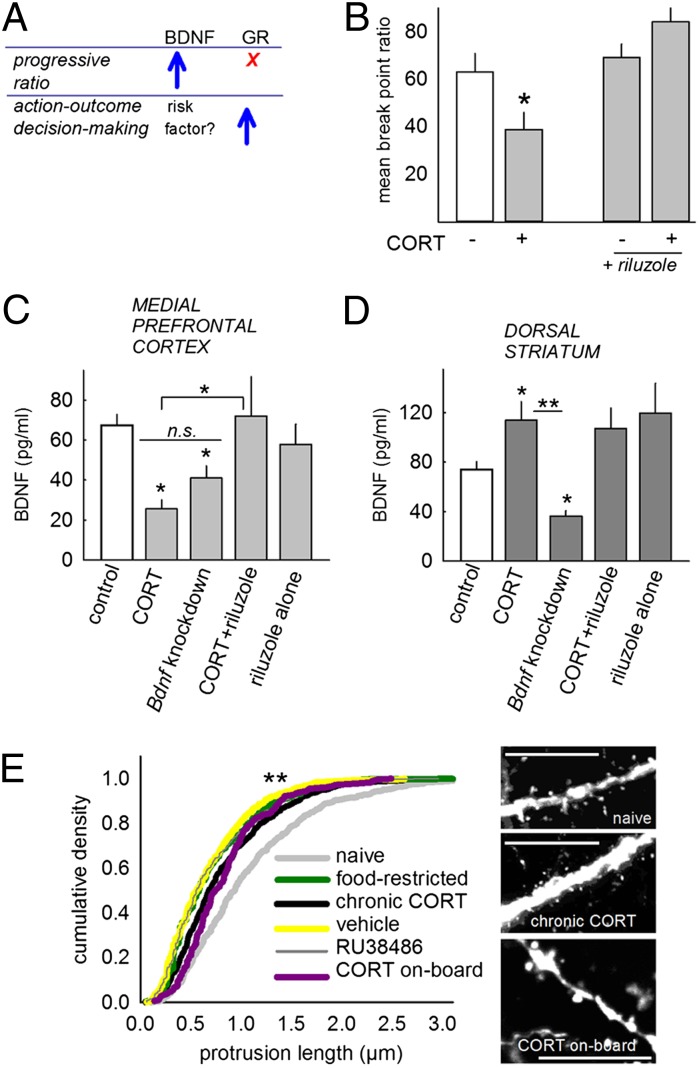Fig. 5.
Avolition is associated with mPFC BDNF, but not striatal BDNF or deep-layer PL dendritic spine morphology. (A) Summary of Figs 3 and 4. Although GR binding facilitates response-outcome learning, it does not obviously impact progressive-ratio responding; in contrast, PL BDNF is not sufficient to regulate response-outcome contingency learning, but it promotes responding on a progressive-ratio schedule of reinforcement. (B) Thus, pharmacological treatments that promote BDNF expression may restore motivation after CORT. Indeed, treatment with the Na+-channel inhibitor riluzole restored break-point ratios after CORT. (C) Riluzole concurrently increased PL BDNF expression after CORT, but CORT alone diminished BDNF to a comparable degree as viral-mediated Bdnf knockdown. (D) In contrast, dorsal striatal BDNF did not parallel break-point ratios: striatal BDNF was reduced by prefrontal knockdown, but increased after CORT, and riluzole had no additional effects. (E) Deep-layer PL dendritic spines were also modified, but again, not in parallel with break-point ratios: Dendritic spine length was blunted by CORT, but also by manipulations that did not reduce break points (e.g., food restriction). Sample dendrites are provided. (Scale bar = 10 μm.) Bars and symbols represent means + SEM; *P ≤ 0.05, **P < 0.001.

